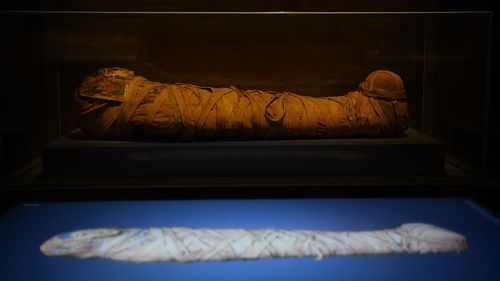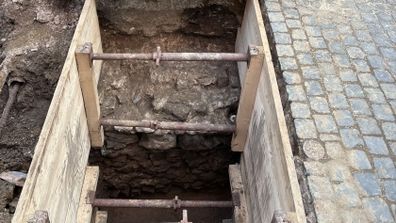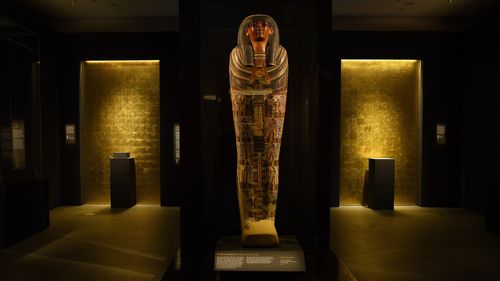It has also removed items that were excavated from a coffin, including an internal cast of a skull and a resin and wax ear.

The museum said the remains and other items will be taken to its collection store while it updates its approach to such displays with Egyptian communities and authorities, however two mummified bodies named Meruah and Horus will remain available for public viewing.
“For hundreds of years body parts in museum collections have been treated as objects,” Dr Melanie Pitkin, the senior curator of the museum’s Nicholson Collection, said.
“We have become so accustomed to seeing them on show that we often forget they once belonged to living people.”

Ancient fort found under cobblestone street
She said the decision to remove the body parts came on the back of significant research into cultural and ethical attitudes towards their display, including focus groups with members of the Australian-Egyptian community.
The museum will also change its language and messaging used in regards to human remains, and will rename its “Mummy Room”.
“The word mummy derives from the Arabic word mūmiya, meaning bitumen, which refers to how a mummified body looked after resins were applied,” Pitkin said.

“It’s a colonial term embraced when Egyptomania took hold in Western cultures in the 19th century.
“In renaming the room we’d like to focus more on the transformation of the body into an eternal being, which is the whole point of mummification, rather than the body itself.
“We also encourage visitors to critically reflect on the ethical complexities museums face when caring for human remains.”
The removed displays have been replaced with ancient Egyptian funerary faces from coffin lids and masks, as well as a painted portrait from the Roman era.






